For a more recent post about using the SteriPEN and other ways to get clean water in Asia (and other parts of the world where you can’t drink the tap water), check out this post: Dealing With Parasites – A Guide to Clean Water Around the World.
Read on to learn about my first experience using SteriPEN in Asia in 2008, and how I got through 6 weeks there without buying a single bottle of water.
See Also: My Zero Waste Kit for Travel (and Home)
Living in an ecologically sustainable way in Hawaii for three months really changed us for the better. We think twice about everything we do now, from turning off the water while we lather up in the shower, to choosing what to buy carefully to reduce packaging and waste.
On our way to Asia, we were very concerned about the fact that you can’t drink the water. We were looking at being relegated to buying large quantities of water in 500ml-1litre plastic bottles. And all in a place where “recycling” is truly a foreign word.
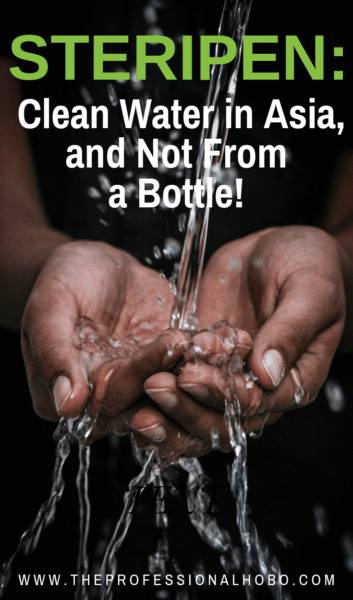
This post was originally published in 2008, and has since been updated for accuracy of links and content.
I cringed at the thought of throwing away plastic bottle after plastic bottle, not to mention the money we would spend for this privilege; the privilege of having clean water.
But we managed to find a viable alternative to this wastage: a way to sterilize water on the go, and all in a small compact solution that easily fit into our bags; SteriPEN was our saviour.
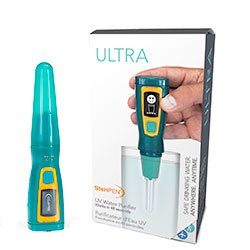
SteriPEN uses ultraviolet light to eliminate all the bad stuff that makes water harmful; from bacteria to viruses. The only pre-requisite is that the water be clear to begin with – no muddy creek water allowed. So whatever came out of the taps where we were traveling was more than sufficient.
Initially we were a little apprehensive about using a tiny little light to sterilize water that had the very real potential to make us incredibly ill (even fatally so), and then to have the guts (literally and figuratively!) to drink said water. But we’re still here to tell the story, so all I can say is…it worked!
Although we had to pay about $100 for the SteriPEN, we never had to purchase water in countries where that’s conventionally the only option, and of course saved (and continue to save) the consumption of hundreds of plastic bottles.
It takes a little extra planning and effort to sterilize a few litres of water (at a whopping 90 seconds a pop) each morning and evening, and then to carry around our ultralight reusable water bottles all the time, but what a savings it has brought both our pockets and the environment.
Let’s do some math:
- We were on the road through Asia for about 45 days.
- At approximately two litres of water consumed each per day, we consumed 180 litres of water.
- Most bottled water came in 500-750ml quantities, which meant the equivalent of 270-360 bottles of water was consumed.
- The cost of a bottle of water averaged out to be a little less than 50 cents. Which meant that we saved about $150 (300 bottles times 50 cents) in buying water.
- The SteriPEN more than paid for itself during our Asian trip. And now we have it for all future travels through countries where the water isn’t safe to drink. It’s all gravy (or rather, water) from here on.
And yes – we did falter here and there. Some days we didn’t have enough water with us, or forgot to bring it along. During our entire trip, we had to buy a few bottles: 11 to be exact. Which is still better than 360 if you ask me.
We even sweetened the environmentally friendly factor by purchasing the SteriPEN Ultra model, which is USB rechargeable. No disposable batteries to worry about!
If you are planning a trip that may take you into an area where the water is not drinkable, consider the alternative to buying (and wasting) your way to hydration. I can say from experience: the little light works. Save a few bucks and a few bottles too.
2018 UPDATE: Be very careful using the SteriPEN on tap water in countries where there are heavy metals. Although the SteriPEN will take care of any ickies like bacteria and parasites, it can’t filter out particulates. After spending a year in Asia in 2017/18 drinking and sterilizing all manners of tap water, I am a bit concerned that I may have subjected myself to heavy metal poisoning – in Vietnam in particular. (This was a process that inspired a hilarious detox process in Koh Phangan).
If you want to filter and sterilize your water, consider using some of the water-related tools I profile here on my shop!
RELATED:
How to Stay Healthy While Traveling: Natural Preventions and Cures
Dealing With Parasites: A Guide to Clean Water Around the World
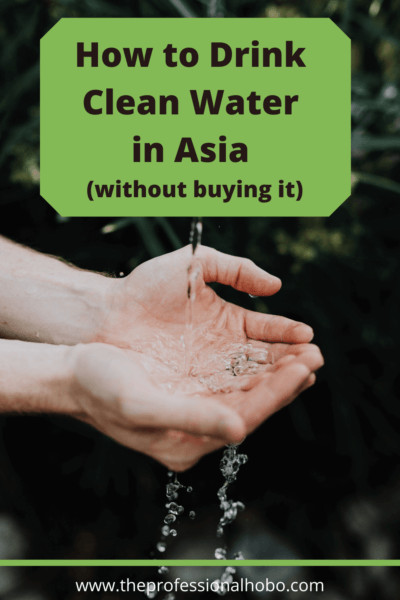
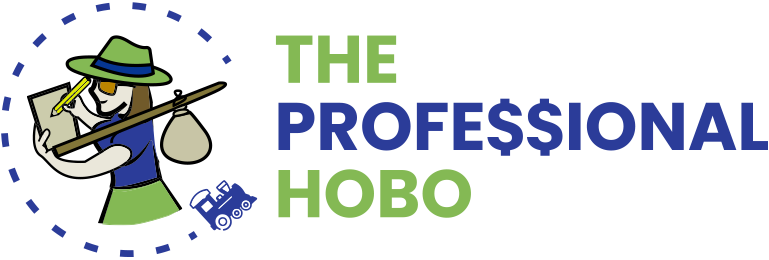
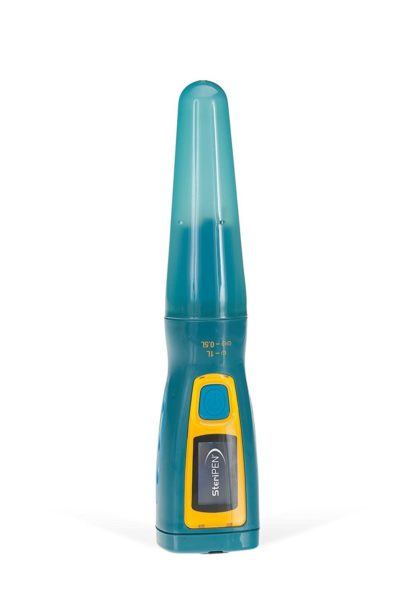


I came across your blog again through the Lonely Planet winners list – well done! Fantastic achievement. Looks like you’re doing really well in your quest to be a full time vagabond!
Al
Do you still think this is an awesome or necessary product that you have been traveling longer?
@Laura – It depends. The last few times I’ve been in Asia, places I’ve stayed have had purified water that I could fill my water bottles with. But they aren’t everywhere, and I hate (with a capital H) buying bottled water – for a variety of reasons.
So it depends on where in the world you’re going. There are plenty of places where hostels/hotels won’t provide purified water (for free, if at all), and having a SteriPen can help you avoid buying/drinking bottled water.
Hope this helps a bit…
This is amazing. I was actually just thinking about the use of bottled water. It is crazy how much waste is generated by bottled water throughout travel. When I went to Peru I did my best to boil water when I could and use the purified water where I could find it. I kept my Kleen Kanteen with me and bought only the big bottles and only when I had to. Still it was hard. The culture is so pervasive. I used a ceramic purifier in a few of the hostals, but then got myself sick doing that in Bolivia. This is an amazing find! I am so glad. It’s worth so much more than 100 dollars, I am not going to leave for the Phillipines, Thailand, and Nepal without it. Crossing fingers for January! *could also be Morrocco, Spain, Italy, France, England, Scotland, Ireland, Iceland. If travel buddy and places to stay hold up for that.
Sorry to be so rambly, your blog is amazing. I am hoping to put your advice to work manifesting full time vagabondish status.
Hey Brandon,
Sounds like the SteriPEN will be perfect for you! Have at er….and happy travels!
I’ve got a question, how did you clean your water bottlecwhile in Thailand. I would like to bring a water bottle, but not sure how the best way to lean it while traveling.
Hi Erhard,
You can clean your water bottle with dishsoap and tap water; just make sure that the bottle is completely dry before you use it again (unless you have a SteriPEN, in which case you can use that to ensure any remaining tap water in the bottle is sterilized).
Sometimes my water bottle starts smelling a bit funky or even getting some algae-like growth that I can’t scrub away due to the small bottle opening. In these cases, I’ll use a vinegar and water mixture and shake vigorously, then let it sit for a few hours, shake and let sit again, and so on for 24 hours until the bottle looks (and smells) clean again. Rinse thoroughly a few times and you’re good to go.
Alternately/additionally, you can look at getting water bottle/camelback cleaning tablets (available at Amazon and outdoor retailers). I’ve never used them, but I’m sure they work well.